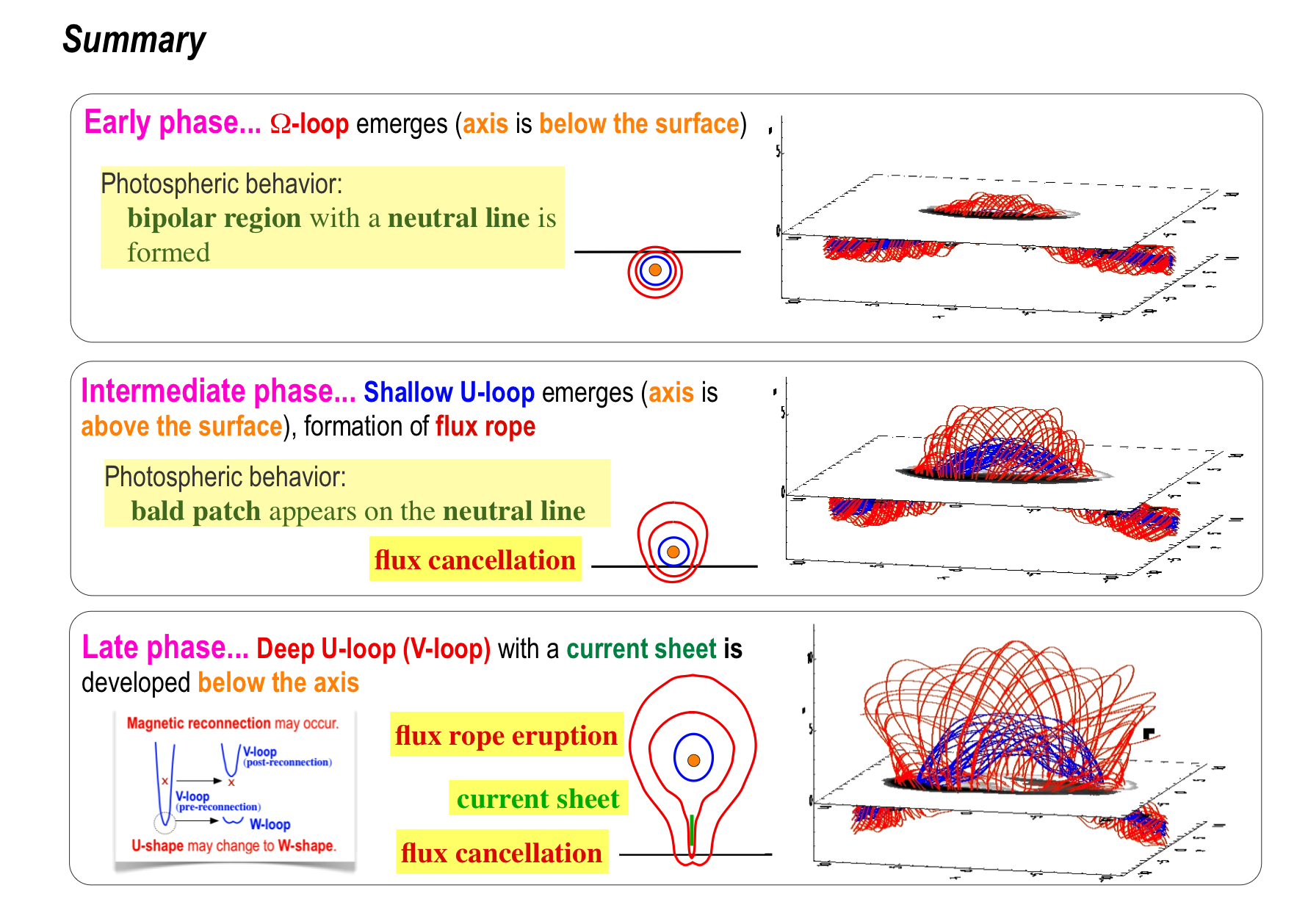To investigate a dynamic process(es) responsible for flux cancellation
in a solar surface, we performed a three-dimensional MHD simulation for reproducing flux emergence, in which surface dynamics and magnetism were treated self-consistently via emergence of a magnetic flux tube from a solar interior to the surface. When an emerging field line assumed an Ω-shape (Ω-loop of concave-down geometry), a dense plasma drained down along legs of the loop to make it rise naturally. On the other hand, a U-loop of concave-up geometry having a dip below the surface and
a local peak somewhere above the surface on either side of the dip did not emerge easily, because
the dense plasma tended to accumulate at the dip, even if emergence of the U-loop could produce
flux cancellation. We found, however, that a certain type of the U-loop did emerge, in which one of the local peaks was sufficiently low,
existing about an order of photospheric gas pressure scale height above the surface. In this case the accumulated plasma drained out of the dip by a siphon-like mechanism, allowing the dip to emerge and producing flux cancellation (U-loop emergence-based flux cancellation; there is a formula for estimating the rate of canceling flux via U-loop emergence). In the other case when both local peaks existed much higher than the pressure scale height above the surface, the dense plasma simply settled at the dip to prevent it from emerging. Rather, deep dip structure (V-loop) developed via U-loop submergence, where
magnetic reconnection could occur to directly annihilate positive and negative magnetic flux.
References
Magara, T., Antiochos, S. K., DeVore, C. R., & Linton, M. G. 2005
, International Scientific Conference on Chromospheric and Coronal
Magnetic Fields, ESA Publication Division, SP-596 p.439-444,
D. Innes, A. Lagg, S. Solanki, D. Danesy (eds.)
Titov, V. S., Priest, E. R., & Démoulin, P. 1993, A&A, 276, 564
Magara, T.
2007 ASPC, 369, 809
Magara, T. 2011 PASJ, 63, 417
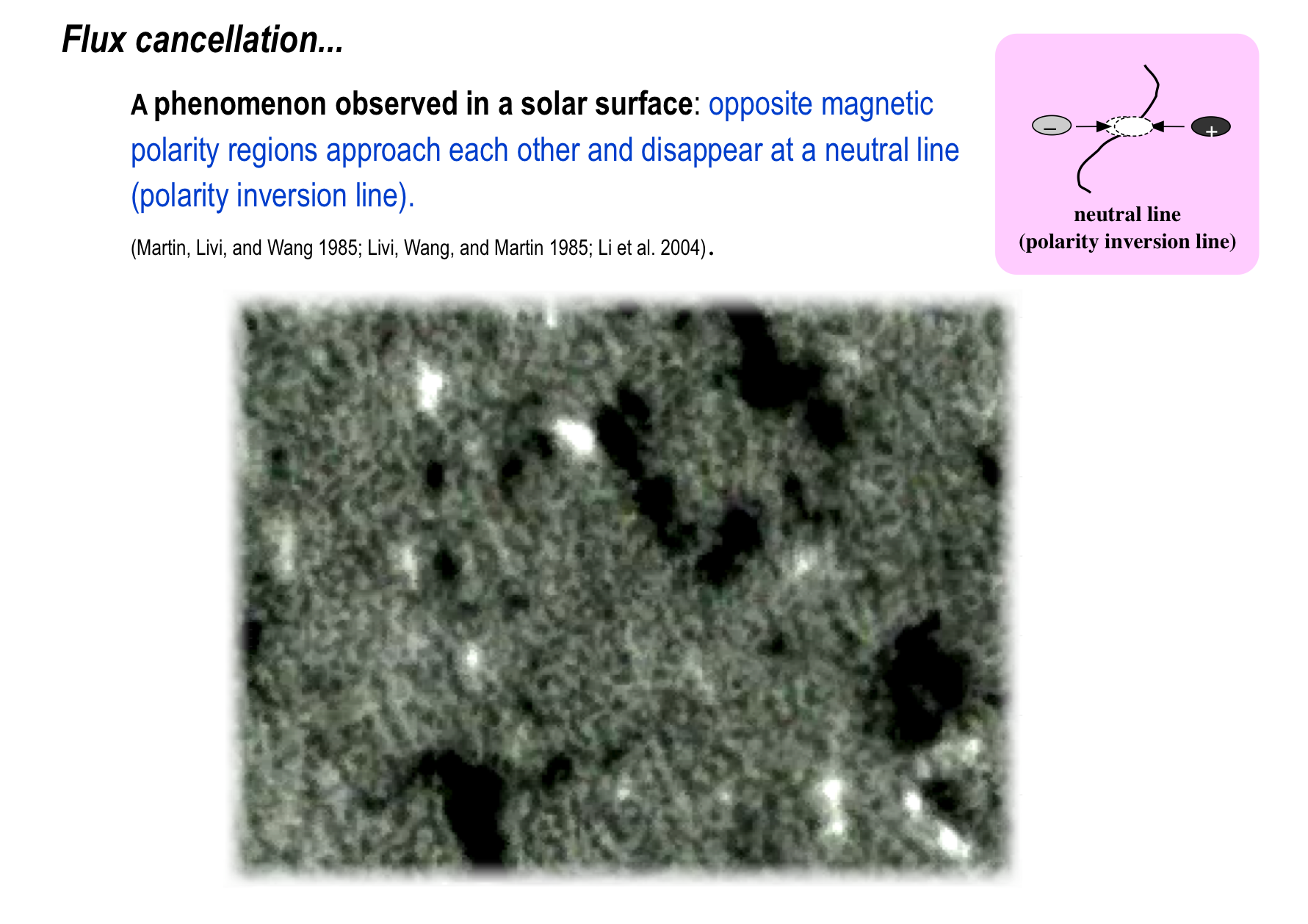
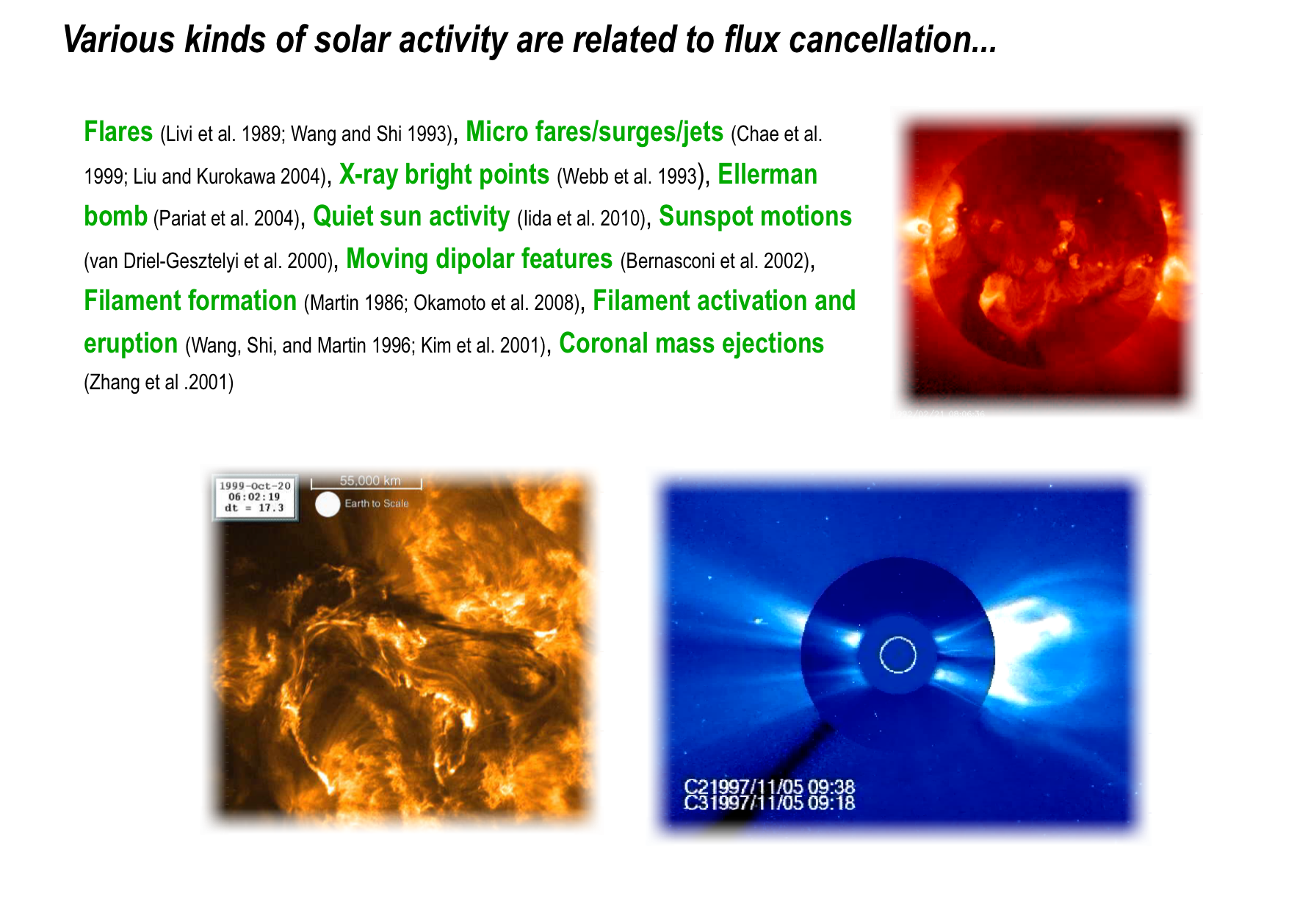
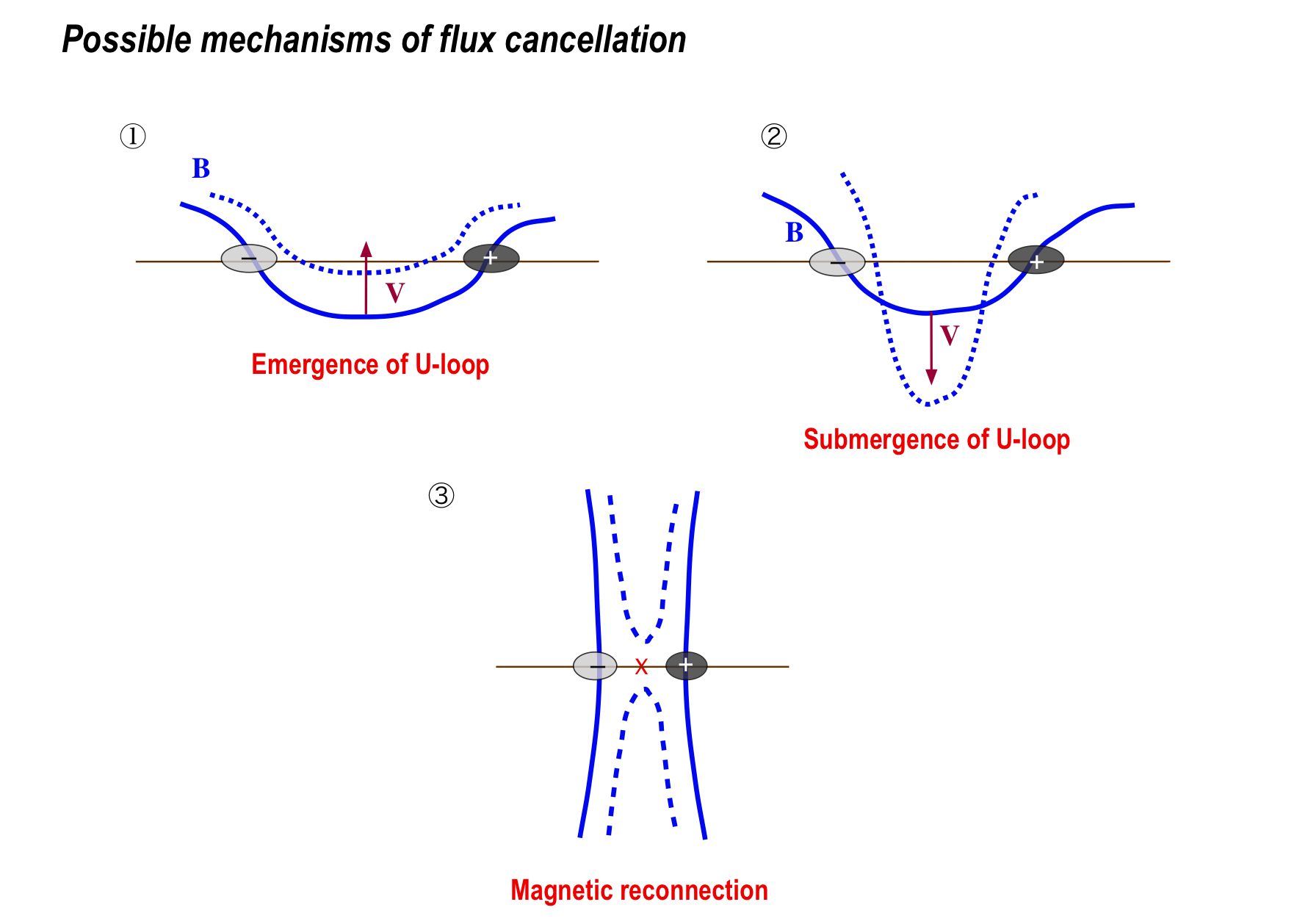
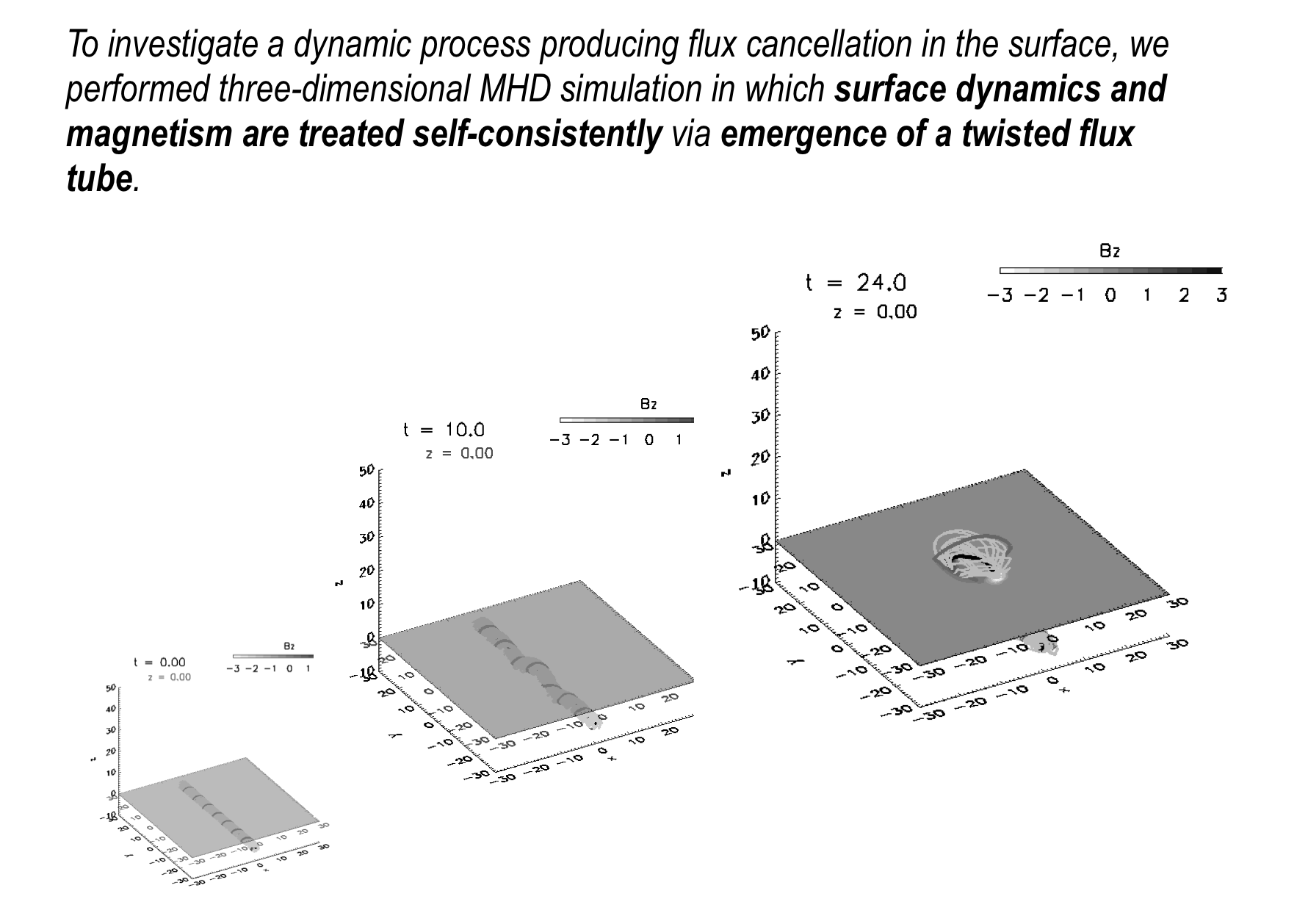
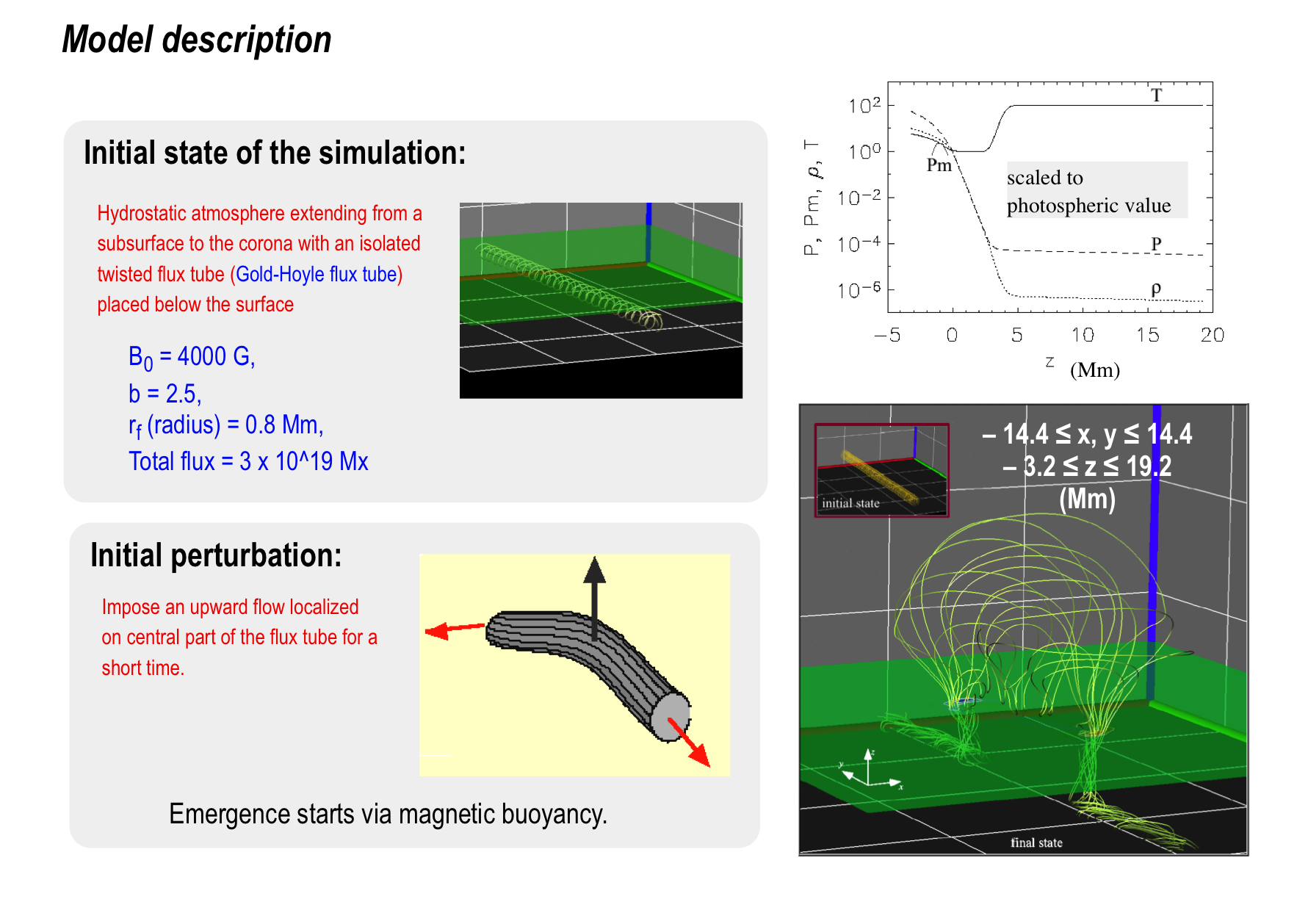
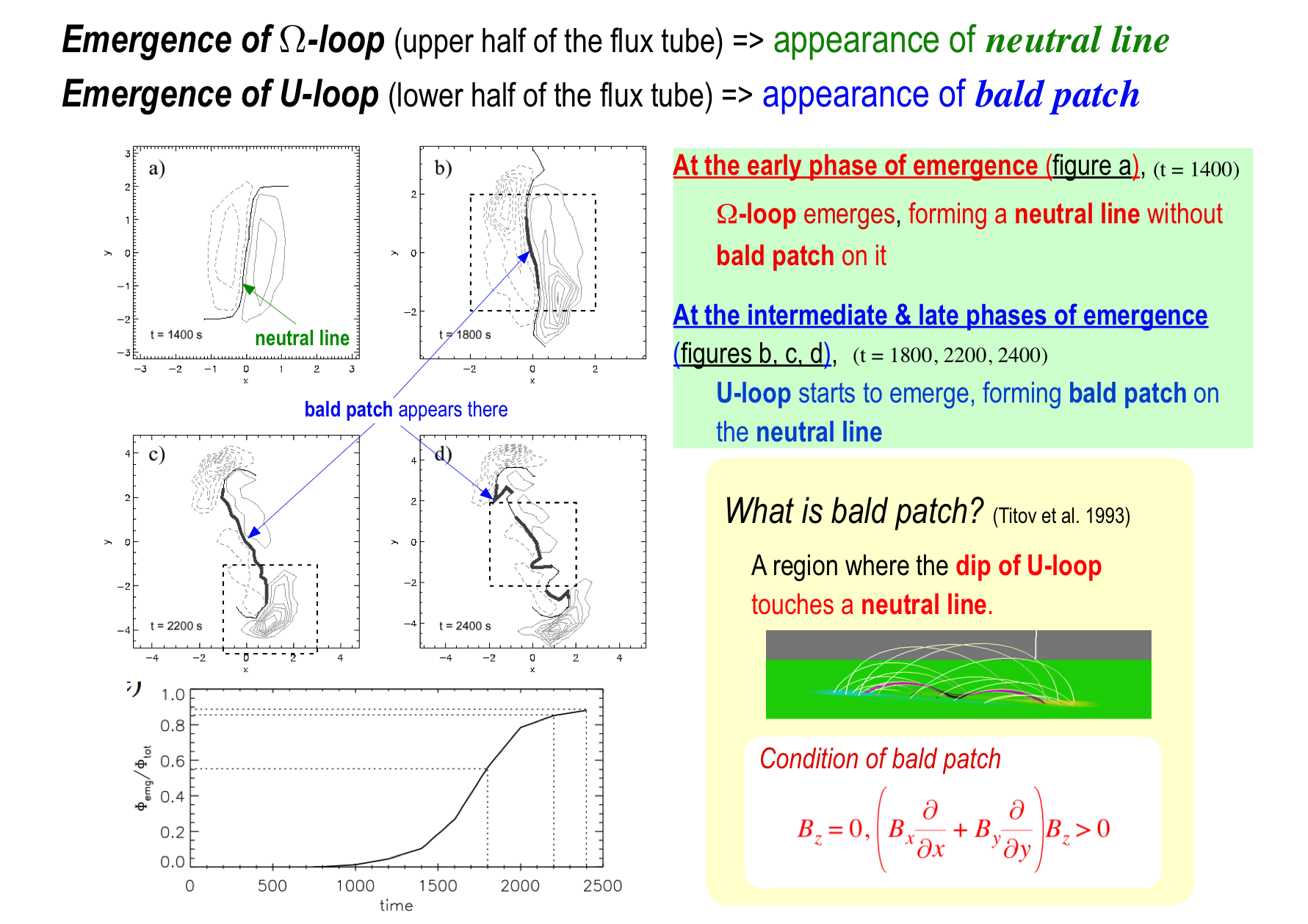
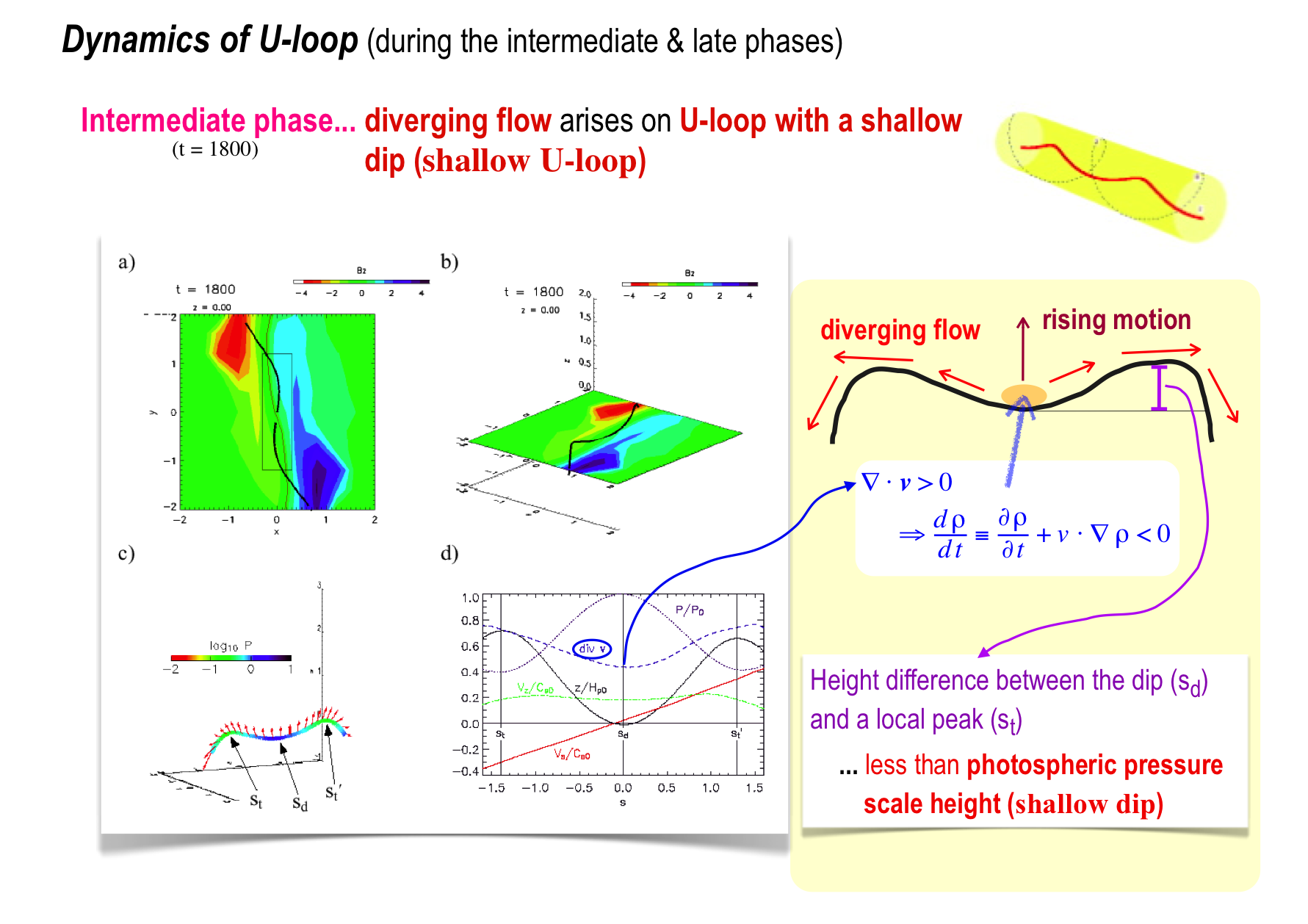
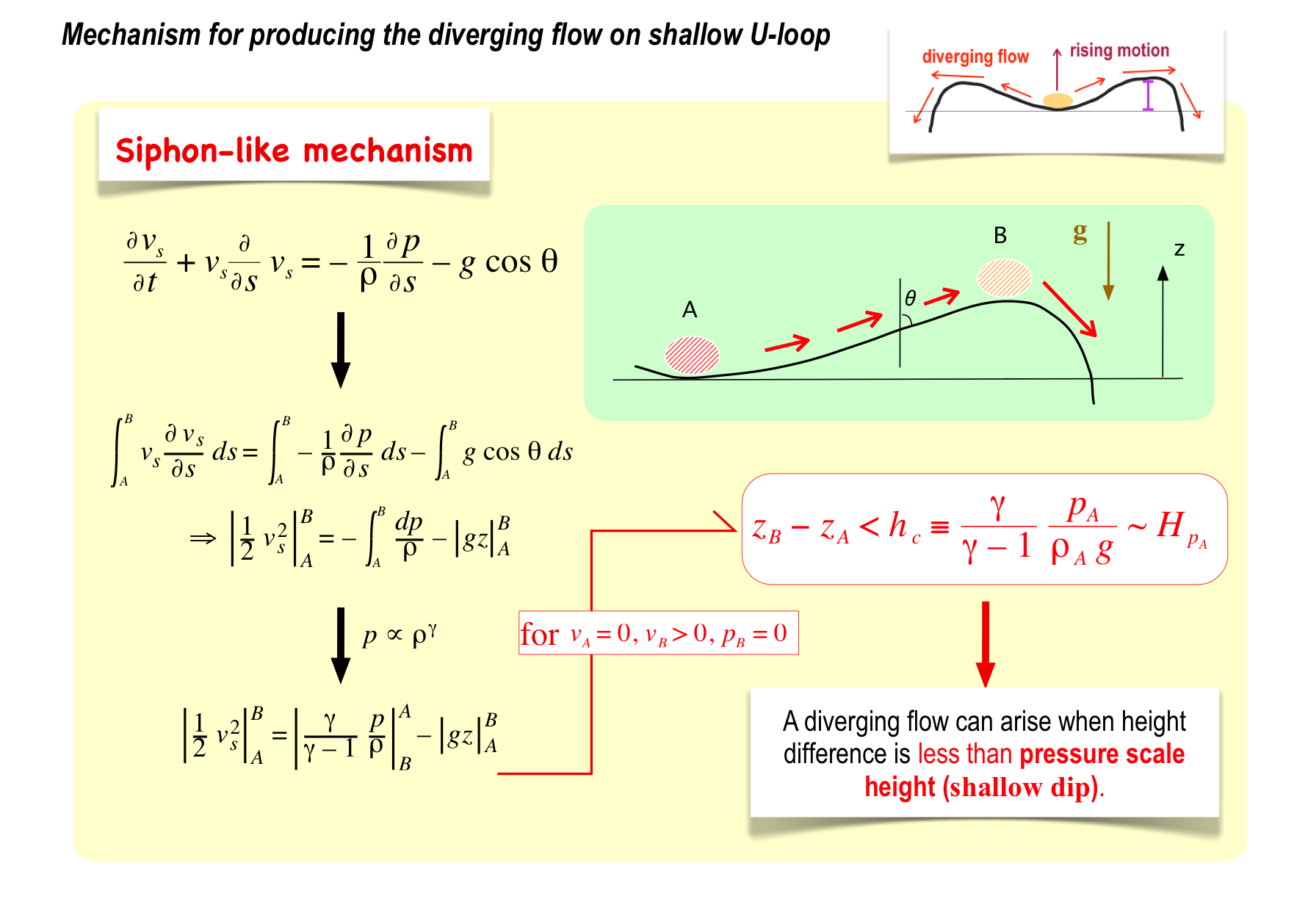
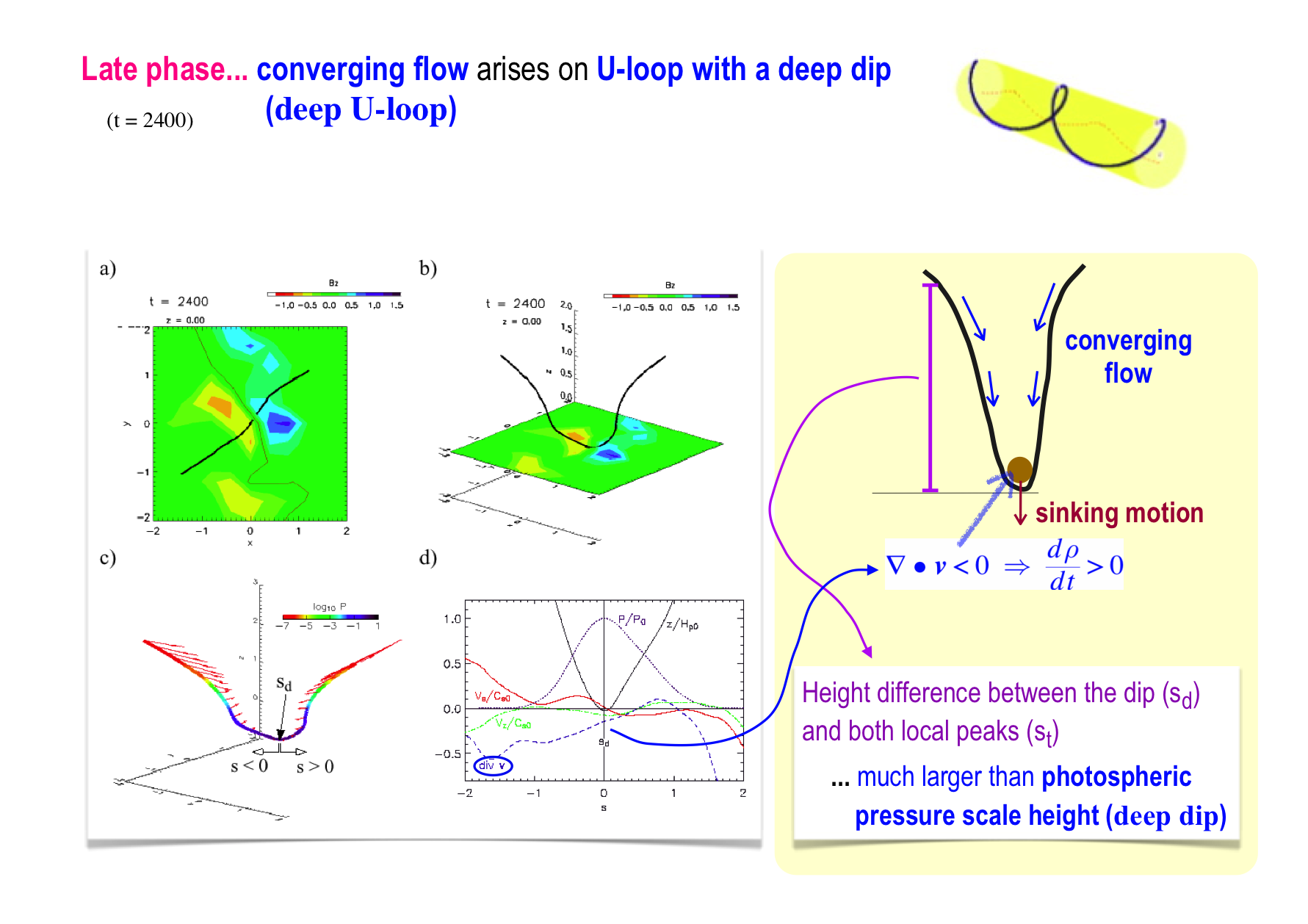
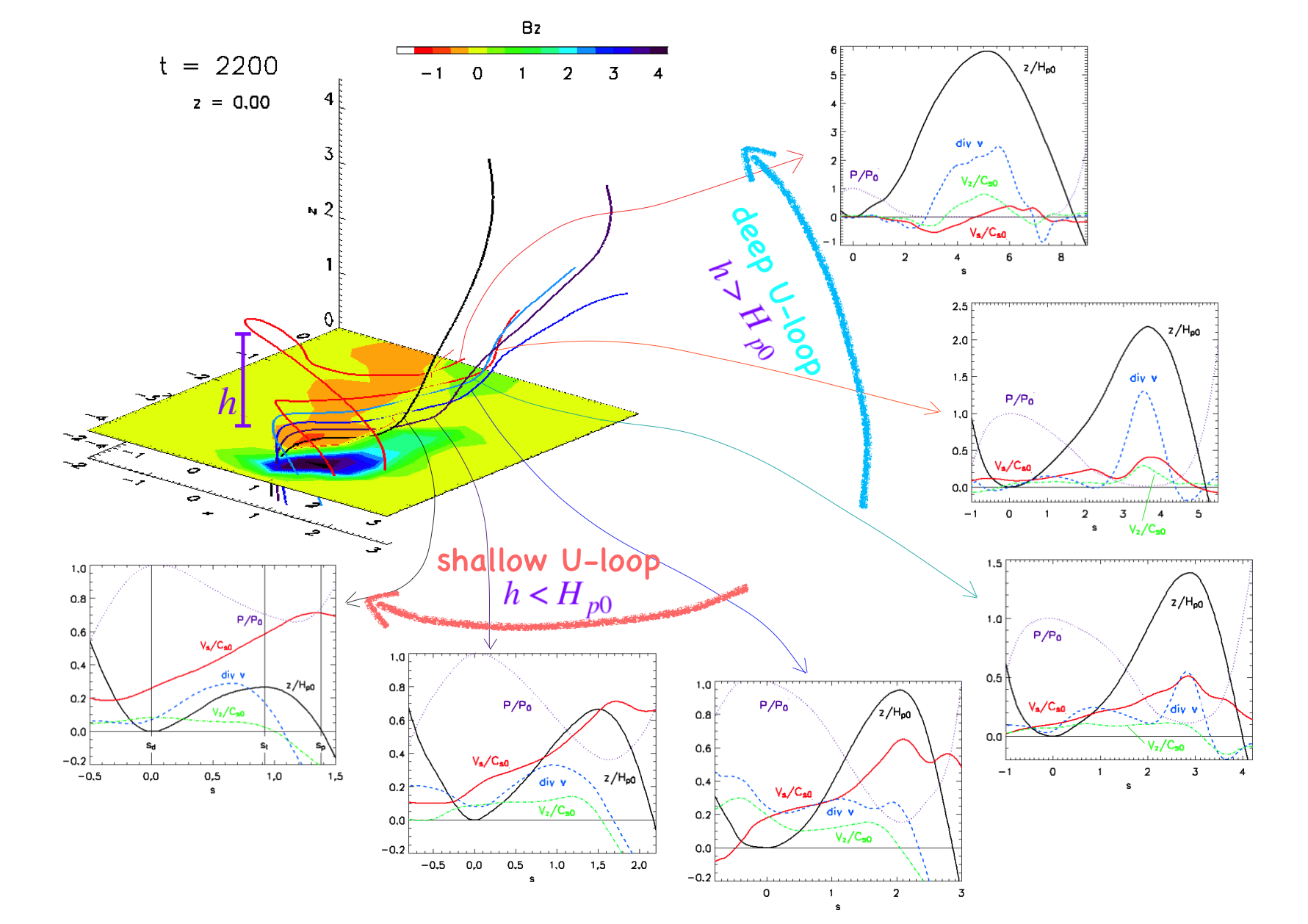
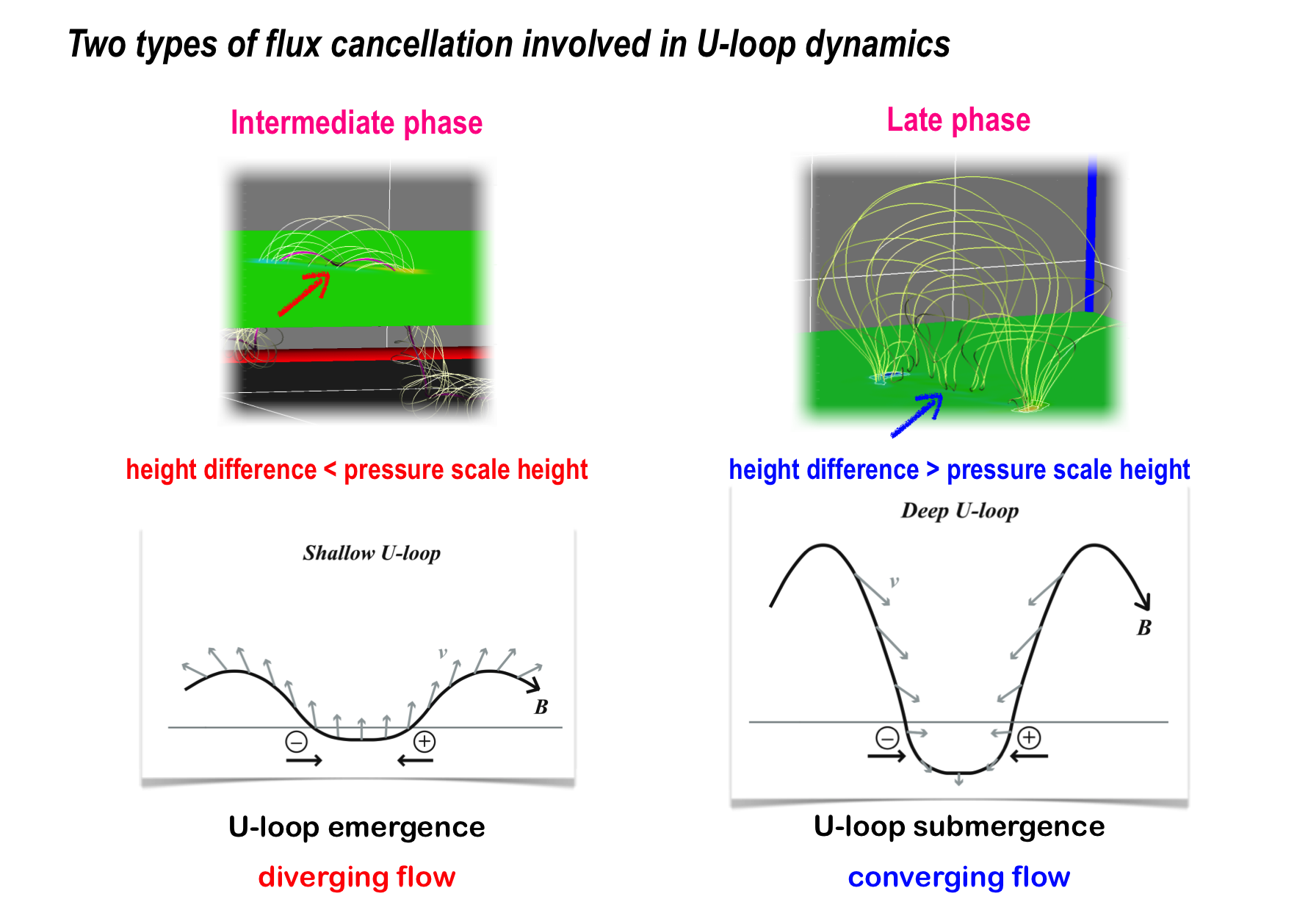
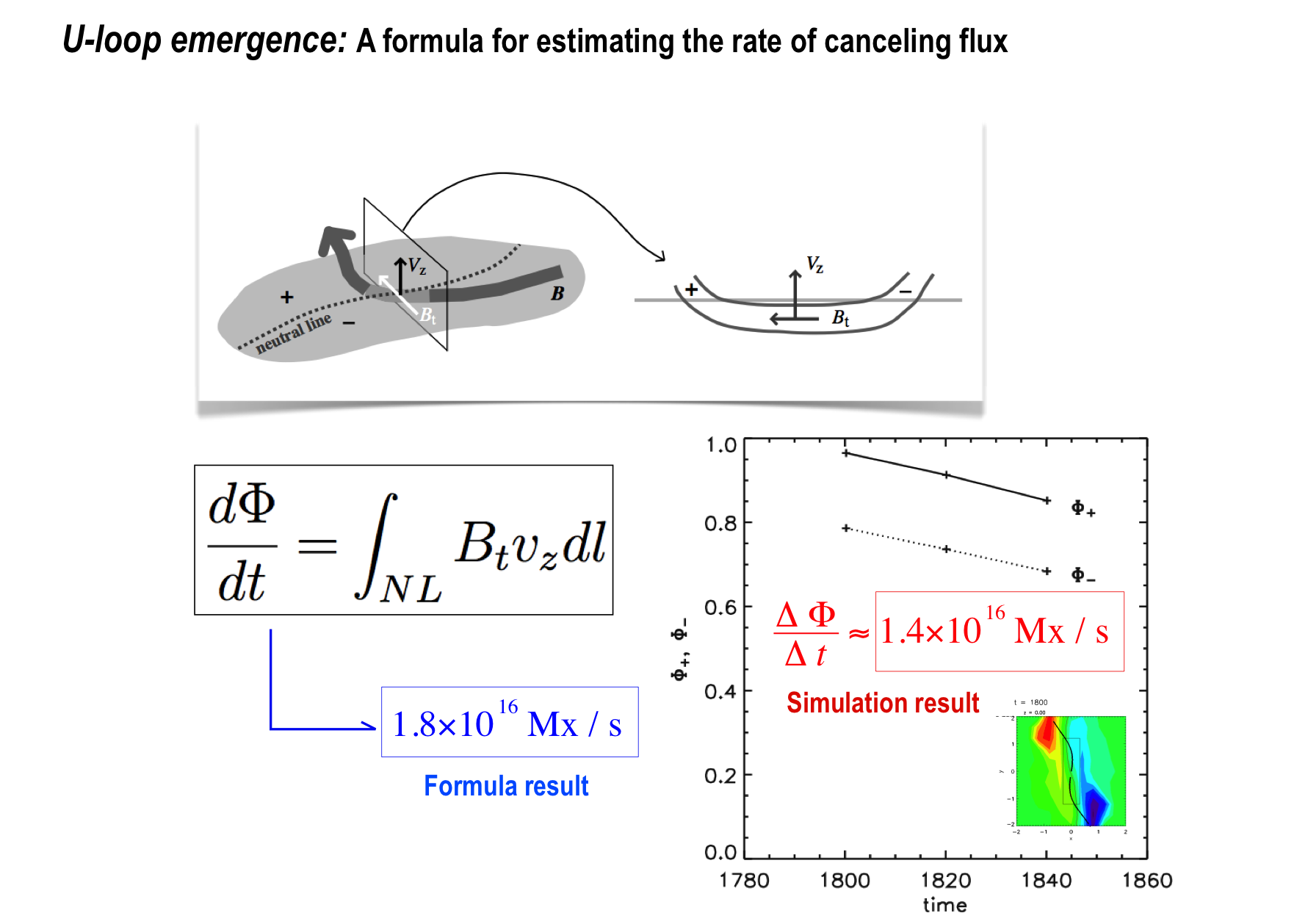
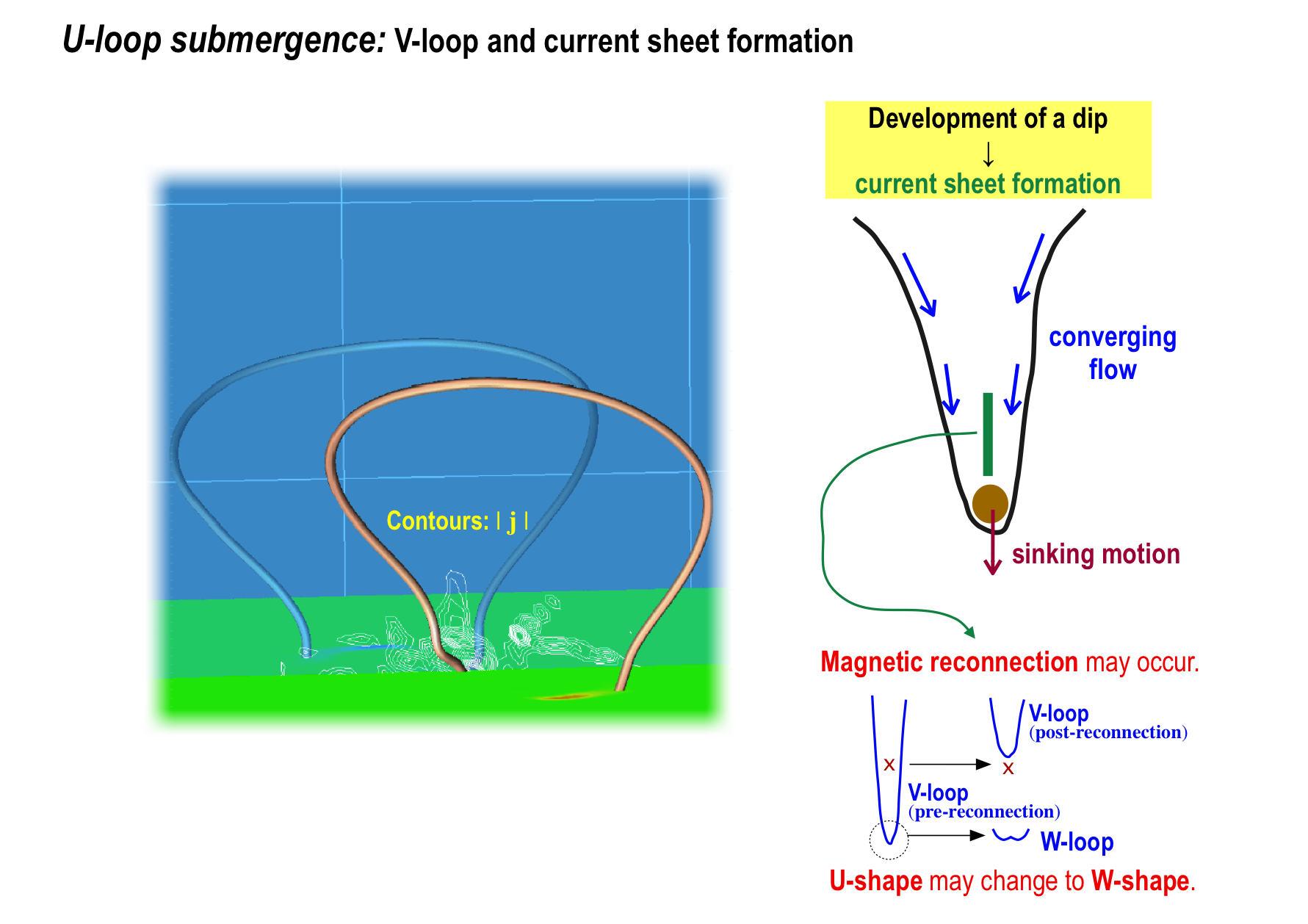
Mechanism of W-loop formation
